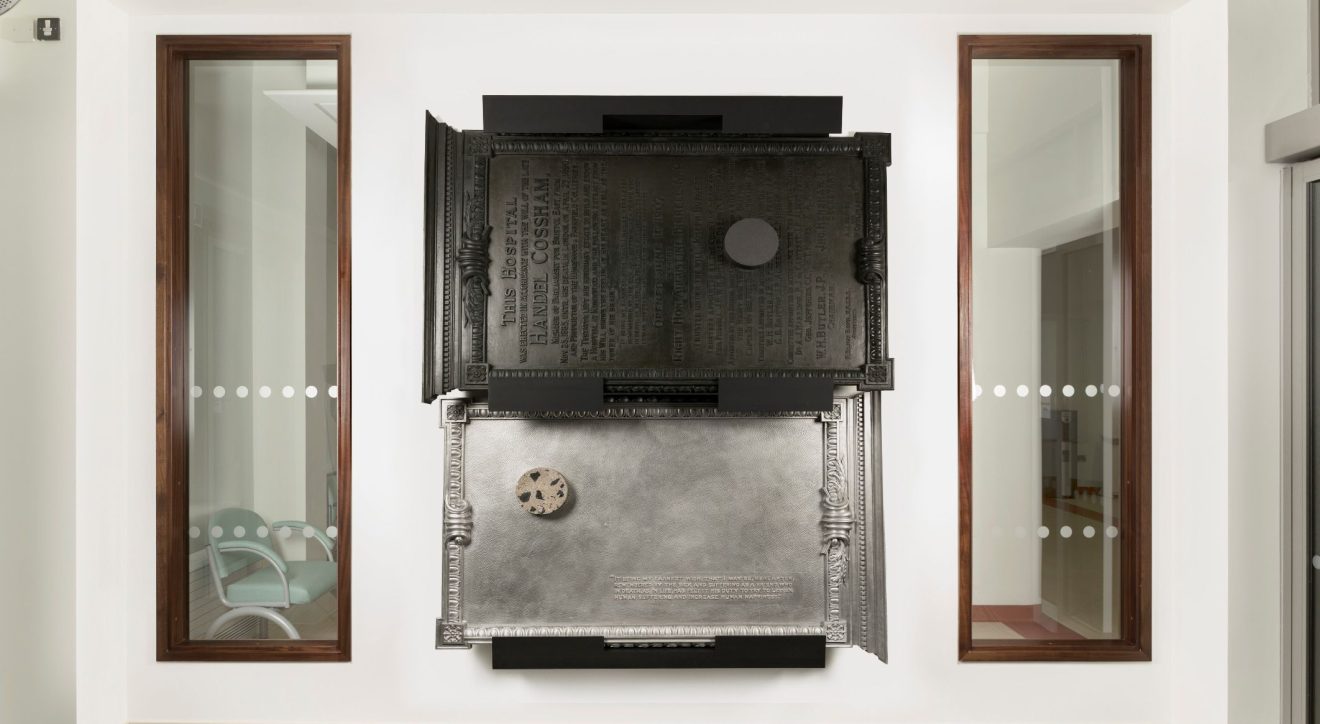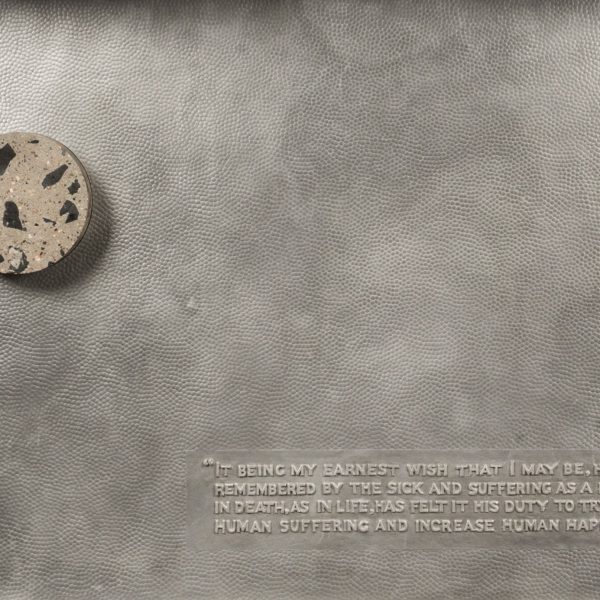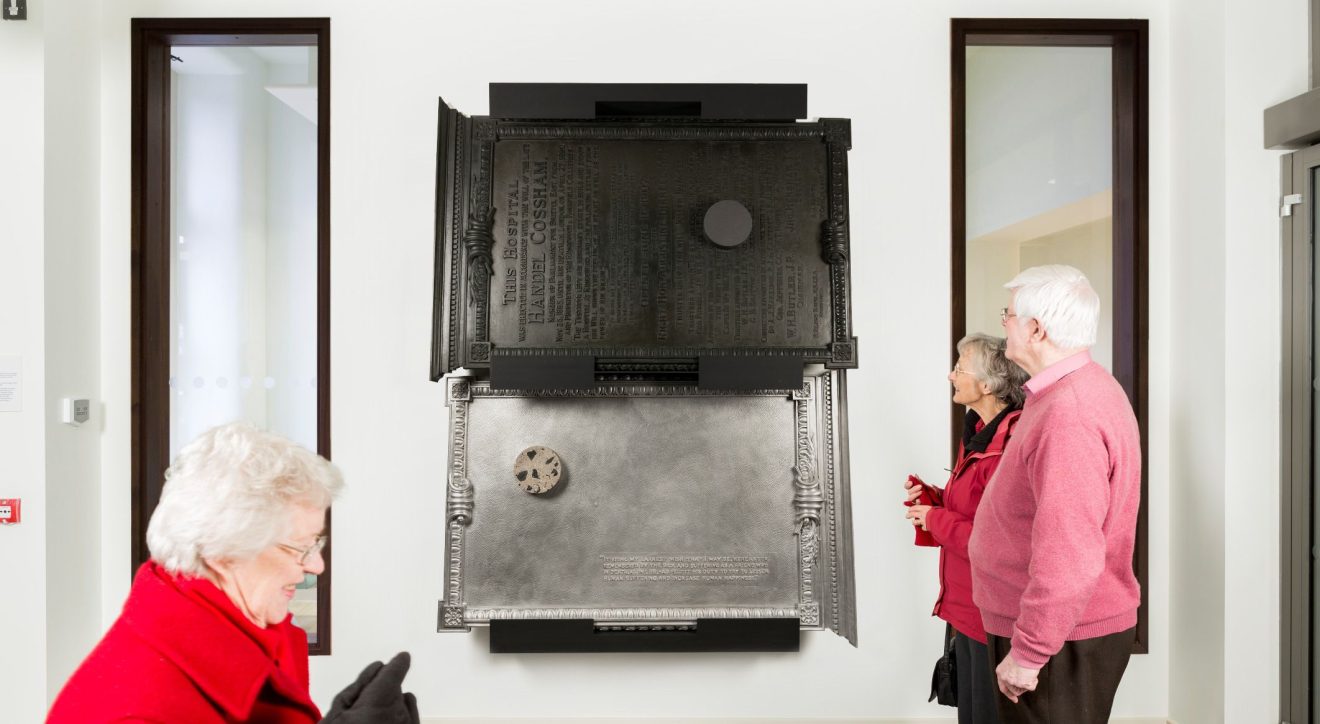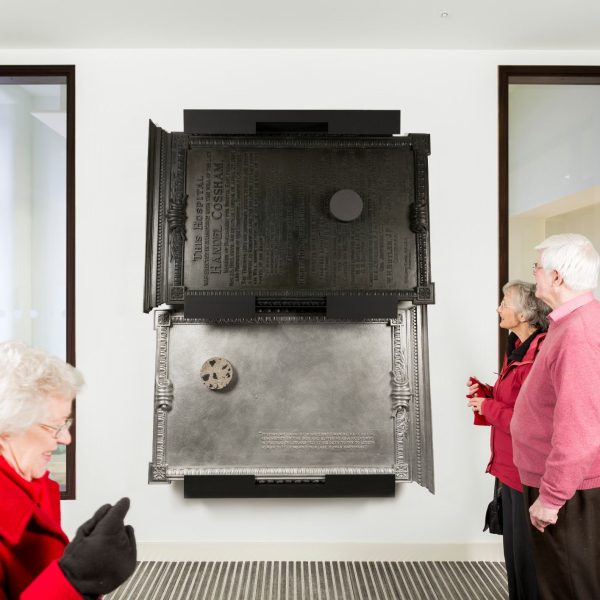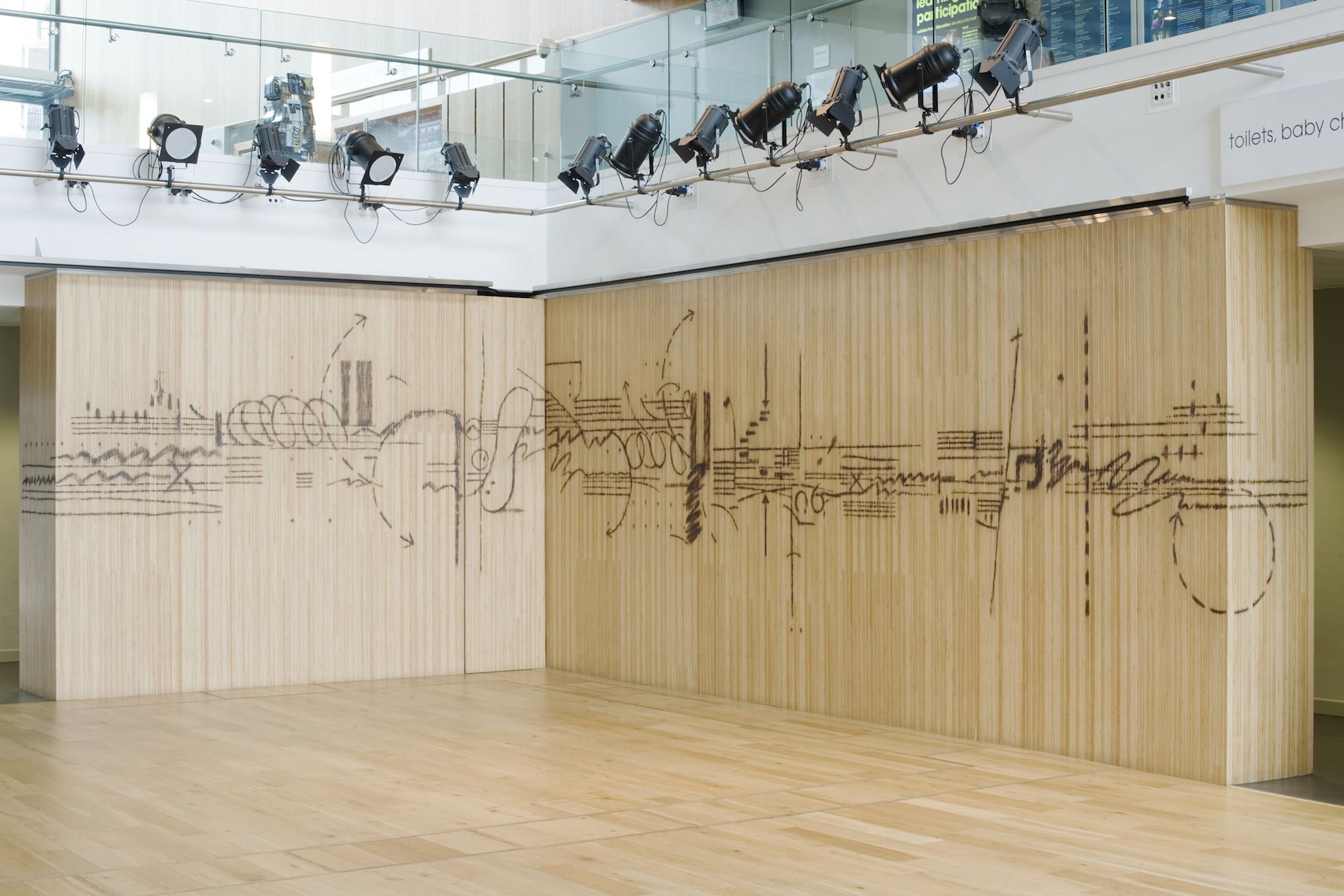
Synopsis
Cossham Hospital reopened in summer 2012 after extensive refurbishment work. The original Queen Anne style hospital building was opened over 100 years ago, funded by money from the will of the late Handel Cossham, a local mine-owner, MP and philanthropist. As part of the development British artist Steven Claydon was appointed to develop an artwork for the site, working closely with project curator Michael Prior and the North Bristol and South Gloucestershire NHS trust.
These are artefacts, then, that are faithful neither to the past... nor to their own apparent chemical make-up. Looking at them, we must seek value elsewhere.Tom Morton, Frieze (2008)
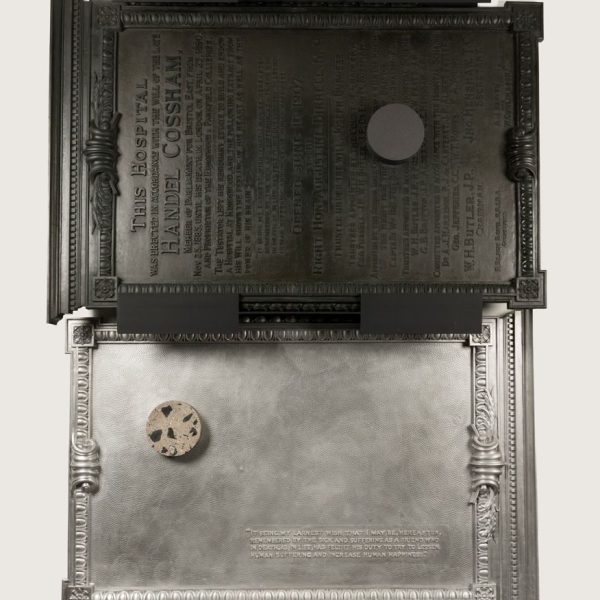

Claydon’s work – ‘Charter’ is based upon a Memorial Plaque situated in the hospital’s entrance space. Like many people, when Steven visited the Hospital, he was struck by the memorial which marks the exact day the hospital first opened. It also features the words of Handel Cossham and his wish to create the hospital, largely to treat miners from his own coal pits that had fallen sick with mining related illnesses.
‘Charter’ is made up of two new versions of the original memorial plaque, each cast in a different material and set within an armature designed by the artist: one in aluminium and another in carbon fibre. The sections are punctured with a large circular plug made from a composite materials using coal, concrete, lead shot and silicon. The materials used have been chosen by Claydon for their symbolic value referencing the sites history, building materials, and its recent development.
I think the encounter between cultural obsolescence and material longevity is the thing that fascinates me about monumental sculpture.Steven Claydon
Steven Claydon
Steven Claydon’s artwork often resembles relics or artefacts from a another place and time; which place and time is not always clear, but there is usually something familiar about the unsettling images and objects he makes. In his uses of the cultural artefacts of history he might refer to any real or fictional culture, and often combines several, but of particular interest are the politics and art of early twentieth-century Europe, popular cultural icons such as Peanuts cartoons and The Smurfs and the language of public art statues and monuments. Steve has said, “I am as indebted to science fiction and wildlife illustration as I am to mythology and early modernism”.
In each case, Steven’s use of existing images and references is intended to suggest new ways of thinking about his chosen subject: to dislocate, unnerve, and surprise the viewer. This is often achieved through a careful selection of materials in which to remake his chosen source. Materials are chosen for their cultural associations as well as their properties and characteristics. For example, instead of traditional bronze, a bust may be made with resin and copper powder or a marble-like polymer ceramic and Steven has used materials such as hessian, aluminium, sealing wax and onyx, each employed for its properties as well as historic and cultural associations.
“These are artefacts, then, that are faithful neither to the past… nor to their own apparent chemical make-up. Looking at them, we must seek value elsewhere.” (Tom Morton, Frieze, 2008)
Many of Steven’s sculptures are presented on plinths and within structures which become part of the work, further emphasising connections between his work and objects displayed as museum artefacts and public monuments which create a kind of immortality for the people or events that inspired their making, whilst the ideas they once represented soon become overlooked, superseded or forgotten. Steven has remarked that “I think the encounter between cultural obsolescence and material longevity is the thing that fascinates me about monumental sculpture.”
